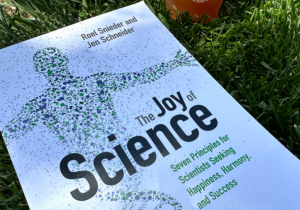Enhancing Productivity with Roam Research
As a healthcare researcher and academician, my professional life feels like a labyrinth of ideas, data, and endless streams of literature I should be keeping up with. It’s a realm that demands meticulous organization and a strategic approach to information management. If you’re looking for a way to do that, consider Roam Research – a tool that has become my compass in this maze.
Why Roam Research? Imagine having a personal assistant who not only helps you jot down ideas but also intelligently links these ideas across a vast network of information. This is what Roam Research does for me. It’s more than just a note-taking application; it’s a central hub where my thoughts, readings, and research findings coalesce into a meaningful whole.
A Daily Ritual of Notes and Reflections: I begin every day with Roam Research. I capture fleeting thoughts, summarize new findings, and outline out the day’s agenda. It’s a ritual that brings order to the chaos. At the heart of the software is a database of bi-directional links. When you want to convert a word or phrase into a concept that can be linked, you simply put double square brackets around it & voila, it has its own page stored in the database, and every mention of that concept is linked there.
Project Pages: Here’s an example of how this is helpful to those of us in academic research. Each project is a universe of its own – with unique objectives, timelines, and tasks. I use Roam Research by creating a dedicated page for each project. This page becomes the central hub for all project-related notes, from brainstorming sessions to detailed plans, and is tagged with [[Project Todos]]. It’s a dynamic space that grows and evolves with the project, ensuring that all my thoughts and tasks are coherently organized and easily accessible.
But of course, I’m always working on multiple projects. I can go to the [[Project Todos]] page where I get a bird’s-eye view of all my projects and can survey everything at a glance. It aggregates all tasks from each project into one comprehensive list, providing a panoramic snapshot of my entire project landscape. This powerful overview helps me prioritize tasks and manage my time effectively, ensuring that no project is left behind.
Categorizing Tasks: To plan my day/week, I actually have several lists I review at the beginning of the day: [[Paper Todos]], [[Grant Todos]], [[Work Todos]], and [[Personal Todos]]. Each category is like a stream of thought, collected into a reservoir of tasks that I can dive into depending on my focus for the day. This categorization helps me maintain a balance between various responsibilities, ensuring that I devote attention to each aspect of my academic and personal life. I also have a [[WaitingFor]] List, which is a unique system I use to track dependencies – tasks that are on hold because they require input or action from someone else.
If you’re not convinced yet, here are a couple other hacks that make my work a lot easier:
- Literature Review: Managing my scientific literature in Roam Research is akin to curating a personal library. Each paper, tagged with relevant concepts, becomes part of a searchable, interconnected database. This system has revolutionized how I access information make it readily available through a simple query.
- Recalling Meeting Discussions & Thoughts: During meetings, when a crucial point about a study is discussed, I tag it with [[Limitations Section]], [[Methods Section]], or even [[Acknowledgements Section]]. This method ensures that when I’m ready to draft a manuscript, a simple query of [[Title of Paper]] and [[Limitations Section]] brings forth all the relevant discussions, neatly linked and ready for review.
Pricing: I wish I could say it’s free, but given all the bells and whistles, including its reliability, I see why they charge for it. Depending on how frequently you want to pay, it costs from $8.33/month (if you purchase the 5-year Believer Plan like I do) to $15/month (if you chose monthly).
Conclusion: Roam Research is more than just a tool for me. With Roam Research, my daily organization transcends mere to-do lists; it becomes a form of art. I have created structured yet flexible spaces for each aspect of my work and life. It’s not just about getting things done; it’s about knowing and navigating the landscape of my commitments. It’s an extension of my thought process, a way to navigate the complexities of academia, research, and even my personal life with greater efficiency. It has redefined how I organize my academic life, turning the potential chaos of information overload into a structured, manageable journey.
If you want to learn more, here are a couple 10-min reads written by others:
- How to use Roam Research: a tool for metacognition
- A beginner’s guide to Roam Research: getting started in 5 easy steps
READ MORE
Tips for Conquering the Literature
How to Do It All by Not Doing It All
Home Page ImageCreator: ChatGPT/DALL-E






5 Comments